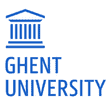-
- Junior Industry Job, Mid-Level Industry Job, Administration Job
- Posted 7 hours ago
Mehrere Mitarbeiter*innen für das Leitungsteam Bargeld
At Deutsche Bundesbank in Regensburg, Germany
-
- Professor Job
- Posted 1 hour ago
Professor of Applied Microeconomics (tenure track or tenured)
At Department of Economics and Finance at Tallinn University of Technology in Tallinn, Estonia
-
- Research Assistant / Technician Job, Junior Industry Job, PhD Candidate Job
- Posted 1 day ago
Two Research Assistants (m/f/d) on a part-time basis (50%) for our Research Centre
At Deutsche Bundesbank in Frankfurt am Main, Germany en de
-
- Research Assistant / Technician Job, PhD Candidate Job
- Posted 3 days ago
Research Assistant - banking and finance / monetary policy implementation and transmission - Part-time (19,5 hours)
At Deutsche Bundesbank in Frankfurt am Main, Germany en de
-
- Assistant Professor / Lecturer Job
- (Remote)
- Posted 1 week ago
Examiner - GCE A Level - Economics A (2015 Specification)
At Pearson in Pretoria
-
- Research Assistant / Technician Job
- Posted 9 hours ago
RESEARCH/ECONOMICS ASSISTANT POSITION AT THE ESF
At THE CONFERENCE BOARD IN EUROPE in Watermael-Boitsfort, Belgium
-
- Postdoc Job
- Posted 8 hours ago
Post doc - Vienna Austria - Macroecological modeling
At Institute for Ecological Economics (Vienna University of Economics and Business) in Vienna, Austria
-
- Postdoc Job
- Posted 3 days ago
POST DOCTORAL POSITION IN ENTREPRENEURIAL FINANCE
At University of Milan in Milan, Italy
-
- Assistant Professor / Lecturer Job, Professor Job, Postdoc Job
- Posted 2 weeks ago
Tenure-track Faculty Positions Vacancy!
At Sun Yat-sen University in Shenzhen, China
-
- Other Job
- (Partially Remote)
- Posted 6 days ago
Ökonom*in (w/m/d)
in Bonn, Germany
-
- Other Job
- Posted 5 days ago
Data Scientist
At TMC Engineering in Spain
-
- PhD Candidate Job
- Posted 5 days ago
PhD Candidate Statistics and Data Science
At University of Basel in Basel, Switzerland
-
- Professor Job
- Posted 6 days ago
W2 Professor (m/f/d) of Business Administration, esp. Digital Marketing

-
- Researcher / Analyst Job
- Posted 2 weeks ago
Research Assistants
At Bruegel in Brussels, Belgium
-
- PhD Candidate Job
- Posted 2 weeks ago
7 DOCTORAL SCHOLARSHIPS
At Institute for Employment Research (IAB) in Nürnberg, Germany
-
- Professor Job
- Posted 2 weeks ago
Professorship in Economics with Focus on Big Data and Large Language Models in Social Data Science
At University of Southern Denmark in Denmark
-
- Assistant Professor / Lecturer Job
- Posted 1 week ago
Lecturer in Economics 2024/2025 Academic Year
in La Jolla, United States
-
- Postdoc Job
- (Partially Remote)
- Posted 2 weeks ago
Post-doctoral assistant department of Economics
At University of Ghent in Gent, Belgium
-
- Researcher / Analyst Job
- Posted 2 weeks ago
Visiting Fellowship (3 months) - early career researchers from low- and middle-income countries
At RWI – Leibniz-Institute für Economic Research in Essen, Germany
-
- Postdoc Job
- Posted 1 week ago
Postdoctoral Researcher in Environmental Economics
At Aarhus University in Århus, Denmark
-
- Postdoc Job
- Posted 2 weeks ago
POST DOCTORAL POSITION FUNDED BY HORIZON EUROPE
At University of Milan in Milan, Italy
-
- PhD Candidate Job
- Posted 2 weeks ago
Fully Funded PhD Scholarship in Maximising the Flexibility of Energy Consumption in Ireland (Flexcon). Galway.
At University of Galway in Galway, Ireland
-
- Postdoc Job
- Posted 2 weeks ago
POST DOCTORAL POSITION IN STATISTICS (ANY FIELD)
At University of Milan in Milan, Italy
-
- Assistant Professor / Lecturer Job
- Posted 2 weeks ago
Tenure Track Assistant Professor in Economics
At DEMS - University of Milan-Bicocca in Milan, Italy
-
- PhD Candidate Job
- Posted 2 weeks ago
4 PhD Positions in Economics at the University of Bern
At University of Bern in Bern, Switzerland
Pagination













